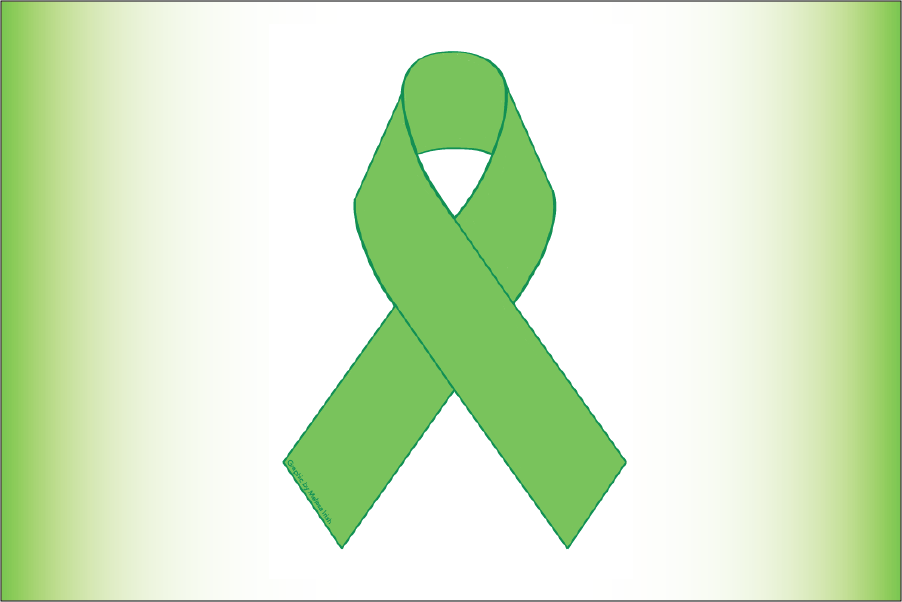Mental Health Awareness Month aims to erase stigma
May 13, 2017
Though May is correlated with the end of the school year and the promise of summer, it is also Mental Health Awareness Month, sponsored by the National Alliance on Mental Illness (NAMI) and Mental Health America (MHA), among other organizations.
It’s the awareness factor that has become increasingly prevalent, especially at Bellevue West.
“Mental health issues can happen to any student, at any time,” dean Jessica Prusha said. “They can look like the most put-together student, valedictorian, athlete, super involved in things. It’s not always the student who isolates themselves. I think that’s been the biggest eye-opening thing for me as I continue in education.”
Prusha explained that she’s seen an increase in students dealing with mental health issues in the past few years. A study conducted by the American Psychological Association revealed that the stress within teens may rival that which adults experienced. However, teens aren’t just stressed – they’re making jokes about death before and after tests.
“The new thing is, ‘I’m joking but I’m not actually joking,’” sophomore Lola Steburg said. “Everyone wants to make a joke out of everything. I think it’s really easy to say, ‘I want to kill myself,’ and then say, ‘Oh, it was a joke…’ and then repeatedly say it. So I think for some people it could be a cry for help.”
The NAMI released data showing that approximately one in five teens (13-18 years of age) experiences a severe mental disorder at some point during their life. For some, their experience begins in high school.
“It’s kind of like a fog, in a way,” sophomore Abby Holomek said. “I call it my cloud. My cloud started subtle, and in ninth grade, it just swooshed out. Ninth grade wasn’t fun.”
Holomek explained that she had been experiencing family issues prior to being diagnosed with depression and anxiety. She was then diagnosed with an ulcer to the stomach, worsened by her anxiety. She said her way of coping had been going to her best friend, until it was apparent that her friend no longer wanted to help.
“Friends usually support, but this friend was like, ‘I don’t need this,’” she said. “Or, ‘I don’t need you, you’re annoying.’ That kind of just made it worse.”
She said she didn’t recover from the loss until the marching band season began. It took her mind off of things. She explained that she will sometimes still fall into “pits,” but she’s learned how to cope with it. It’s a familiar trend to other students who’ve been diagnosed with a mental illness.
“The feelings come back constantly,” Steburg said. “Now I’m at a point where I know I don’t want to die, but the thoughts are still there. It’s a whole new level of crazy. My OCD has never been realer than ever, but my other mental health issues have never been calmer. It’s like they take turns.”
She described her experience as one that affected her family.
“It’s a very selfish disorder, so you don’t ever really think about the people around you,” she said.
All three students interviewed stated that others haven’t always taken their illness seriously.
“You feel closed off from everyone else and that you’re going through something no one else understands,” a student speaking under the condition of anonymity said. “One statement that I’ve heard over a period of time is, ‘I feel like if you actually wanted to die, you would’ve done it already.’ That makes you feel like you have to hide yourself until you’re back to this ‘normal’ you. It’s kind of like being a ‘werewolf’ you. You dread it when it happens.”
On the other hand, the anonymous student’s experiences with the counselors at Bellevue West have been positive. On days where they struggle with anxiety, students may be offered a safe space in the office to just breathe and relax. At one point, this student was offered an extended time period to take a test.
“Some people have this mental block that they really need more time than the average person does,” the student said. “The ability to acknowledge that not everybody is the average person and equality does not mean the same thing across the board for every single person, that it means tailoring it to their weaknesses, I think that that was really nice of [the counselors] and really insightful.”
Although the anonymous student didn’t take up the offer, they expressed their interest in seeing these small changes in hopes of normalizing mental illness within students. Steburg has experience with accommodations, which she considers a “privilege,” with a 504 Plan.
“All my teachers get emailed about it before I start a new semester or a new class with somebody and they can help me,” Steburg said. “So if I come to them and I say, ‘Hey, I’m kind of freaking out, can you let me go to the bathroom?’ and I can go wash my hands and I’ll be in the bathroom for 30 minutes.”
With her experience in previous schools, she expressed that Bellevue West made it easier to live with mental illness and obviously cared. Still, all three students interviewed expressed that something more could be done.
“There’s definitely a struggle with the fact that sometimes depression is chronic,” the anonymous student said. “Sometimes medications don’t do everything they should and sometimes people live with that depression for their entire lives. Finding ways to normalize people like that in society and to have people know how they can interact with those people and how to acknowledge the differences without treating them as something they shouldn’t get involved with [would help].”
The most recent attempt at creating a platform for conversation about suicide was the show, “13 Reasons Why.” Based off of the book by the same title, the Netflix series, narrated by a character named Clay, centers on a girl named Hannah. She makes 13 tapes, each one for a specific classmate who she blames for her death, and shortly after kills herself.
The show ignored guidelines set out by the American Foundation for Suicide Prevention (AFSP) that help journalists report on suicide without sensationalizing suicide. A clinical psychologist, John Mayer, Ph.D., spoke with the online magazine SELF and told the site that the show is “a sad exploitation of a devastating problem among our youth.”
“I don’t see the value in it except to sensationalize teenage suicide,” Mayer said.
Despite its characters being teens in high school, the anonymous student interviewed agreed. They said that the show was resonating well with neurotypicals, a term for those without mental illness or disabilities, rather than those who did suffer from mental illness.
“As someone who does have depression and has been suicidal, I don’t think it can be simplified into reasons, a list of people who committed to it,” the student said. “Even though I have had events in my life that have definitely been harsher than others, without those events, I would still have a mental illness.”
“13 Reasons Why” has been a success commercially, being the most tweeted show of 2017. However, it failed to show mental illness outside of its societally accepted function: to entertain. “Split,” a film released earlier this year that revolved around a character with dissociative identity disorder (DID), sensationalized the illness by making the illness into a two-hour thriller.
“I still very much worry how people will view me with a mental illness,” the anonymous student said. “My ability to function well seems pretty under control, so I feel like I don’t have the right to that. That comes from internalized stigma that I still hang onto.”
That statement resonates with people who suffer from mental illness. Mental illness, moderate or severe, has the capability to disable those who have it. The depiction of these illnesses, however, such as bipolar disorder, DID, and psychosis, are seen as the most extreme form of those and that they are the only cases. Depression itself, the most common form of mental illness, has been made out to be a mere feeling that “everyone” has. As a result, nearly half of Americans with severe mental illness don’t seek treatment. Those who are vocal about their experiences are seen as “attention seeking,” just as the media presents these illnesses to be.
“A lot of people who are very forward about their mental illnesses can come off as attention seeking,” Holomek said. “Most of the time there’s an actual problem there, and they aren’t taken seriously.”
According to American Heart Association, health care itself can create barriers to being diagnosed. Apart from stigma and fear silencing illness, financial barriers such as health plans that don’t cover mental health treatment as they do other illnesses are a problem as well.
“A lot of people brush off self-diagnoses,” the anonymous student said. “While I think it’s very important and strongly recommended to go see a mental health professional, I think it’s also important to acknowledge that takes money and resources. Everything from the pain to see a therapist to having the right therapist, going around until you find a good fit for you, sometimes people only get to have those self-diagnoses and it’s still important to listen to those people as well.”
According to MHA, being able to detect symptoms of mental illness is important. They compare mental illness to cancer and state that they go through similar stages.
“When people are in the first stage of those diseases and are beginning to show signs or symptoms like a persistent cough, high blood pressure, or high blood sugar, we try immediately to reverse these symptoms,” the MHA said on their webpage. “We don’t ignore them. In fact, we develop a plan of action to reverse and sometimes stop the progression of the disease. So why don’t we do the same for individuals who are dealing with potentially serious mental illness?”
How to approach mental health with students, and especially suicide prevention, has changed over the years at West.
“Before we would do yellow ribbon assemblies,” teacher Rebecca Hier said. “Now our training is online and is an interactive experience. We’re given a classroom of students and we have to click through a conversation with them to figure out, ‘here’s the best response to work with this student, here’s the best questions to ask to determine if they are a threat to themselves.’ If in our conversation we feel that student is a threat to themselves or there’s a red flag that goes up, our next job is to report to the counselor. Then the counselors can take it from there.”
Hier explained that she normally keeps counselors in the know with students, and has had to report to the police before.
“Three years ago, I found a note after school,” she said. “I had to call an administrator at home. We looked up the student’s information, called home, nobody was home, we called the police and the police had to report to the home. The student was fine. The protocol goes beyond the school day.”
Both Prusha and Hier said that it’s important to recognize mental illness within any type of student.
“In terms of working with students who sometimes have suicidal thoughts, it really is just about being aware and noticing little things,” Hier said. “I think that’s the biggest thing we could do to protect our students, reporting these things and having these conversations so that they remain safe. Sometimes it’s easy for students to not realize that if they don’t get to do what they want, and someone stops them, they don’t realize that that is an act of love and concern.”
If you or someone you know is struggling with mental illness, please call the toll-free National Alliance on Mental Illness’ helpline: 800-950-6264.






